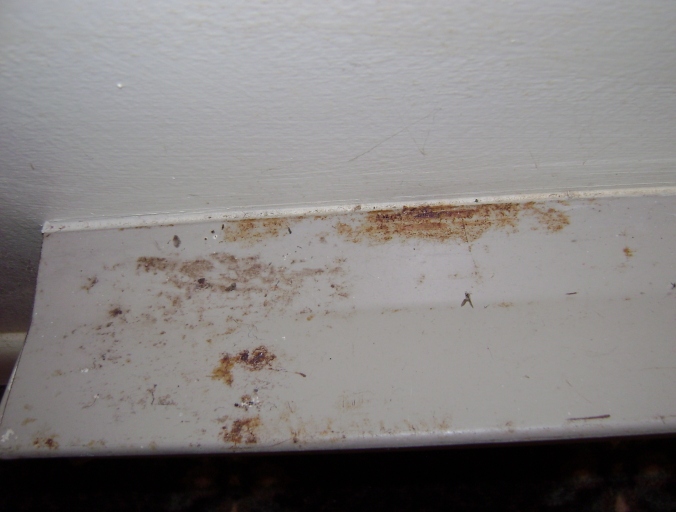Find a Mold Specialist Now
Click or Call, Toll-Free 24/7
Chrysonilia Mold
Chrysonilia is sometimes referred to as “red bread mold” because it is pink or red in color and is sometimes found on bread, as well as other foods. However, it can be found on many common household materials, as well.
For instance, it is often found on paper, including wallpaper. It is often found on wood, including drywall, floorboards and ceilings. A leaky roof often leads to the development of this mold. It is sometimes found on carpet and old mattresses, as well. As you can see, this is a strain of mold that can grow well on a wide variety of materials.
This is also one of the more rapidly growing strains of mold. That, combined with the fact that it grows well on so many different materials, means it can spread throughout your house quickly and easily. It can thrive in almost any room. It can do a lot of damage before you even realize it's there.
Mold literally eats away at organic materials, including wood. Given enough time, walls, ceilings and floors can actually collapse due to mold. You can read more about how mold can damage and eventually destroy a house here.
Of course, mold also causes health problems, as you probably know.

Health Problems Associated with Chrysonilia
All strains of mold can cause health problems, especially in those with pre-existing respiratory conditions such as asthma and those with weakened immune systems. The very young and the very old are also highly susceptible to mold-related illness. It is important to understand that even healthy adults can be affected by exposure to mold, especially over a lengthy period of time. Even your pets can be made ill by exposure to mold in the home. You can read more about how mold affects pets here.
According to Clinical and Vaccine Immunology, this particular strain of mold can sometimes cause asthma in people not previously diagnosed with the condition. The Centers for Disease Control and Prevention reports that studies have found that exposure to mold is particularly likely to lead to the development of asthma in children. This is a serious concern, since asthma is a life-long illness. Here is more about the link between asthma and mold.
Of course, in addition to asthma, exposure to mold can cause or contribute to a whole host of other respiratory problems, including chronic sinus infections, bronchitis, and pneumonia. Respiratory infections caused by mold can be difficult to treat because they don't usually respond to antibiotics, which are the type of medication typically prescribed for such infections. Instead, antifungal medications are generally required, although antibiotics might be needed, too, if a secondary bacterial infection has settled in. In cases in which more than one type of infection is present, finding the right combination of treatments can be particularly challenging.
If you're experiencing mold-related health problems, your doctor might refer you to an infectious disease specialist or a pulmonologist (a lung specialist). Often, mold-related illness can be treated on an outpatient basis but sometimes hospitalization is required.
In addition to getting the appropriate medical treatment, you'll need to eliminate the mold from your home in order to recover your health. Treatment is unlikely to be effective if you continue to suffer exposure to chrysonilia (or any other type of mold, for that matter).
Removing Chrysonilia from Your Home
Mold of any kind needs to be removed from your home as quickly as possible. If you're having mold-related health problems, or if you have any respiratory or immune system disorders, the U.S. Environmental Protection Agency (EPA) suggests consulting your physician before tackling the mold removal job yourself. If you are experiencing serious health problems or are very immunocompromised, your physician may recommend you arrange for someone else to do the mold removal work for you. He or she may even recommend you not return home until the mold removal can be completed.
If you need help with mold removal, you can schedule a free consultation with a mold removal professional. The professional will inspect your home for mold, but should be willing to meet with you in another location to discuss your household mold problem if your physician has recommended you avoid your home due to the mold. If you plan to do the mold removal yourself, you can still benefit from some free advice from an expert in the field. There's no cost for the consultation and no obligation on your part. To find qualified mold removal professionals offering free consultations near you, just follow the link.
Return From Chrysonilia To Our Main Mold Types Page
Privacy Policy Terms and Conditions Accessibility Do Not Sell My Information Disclaimer Contact Us




